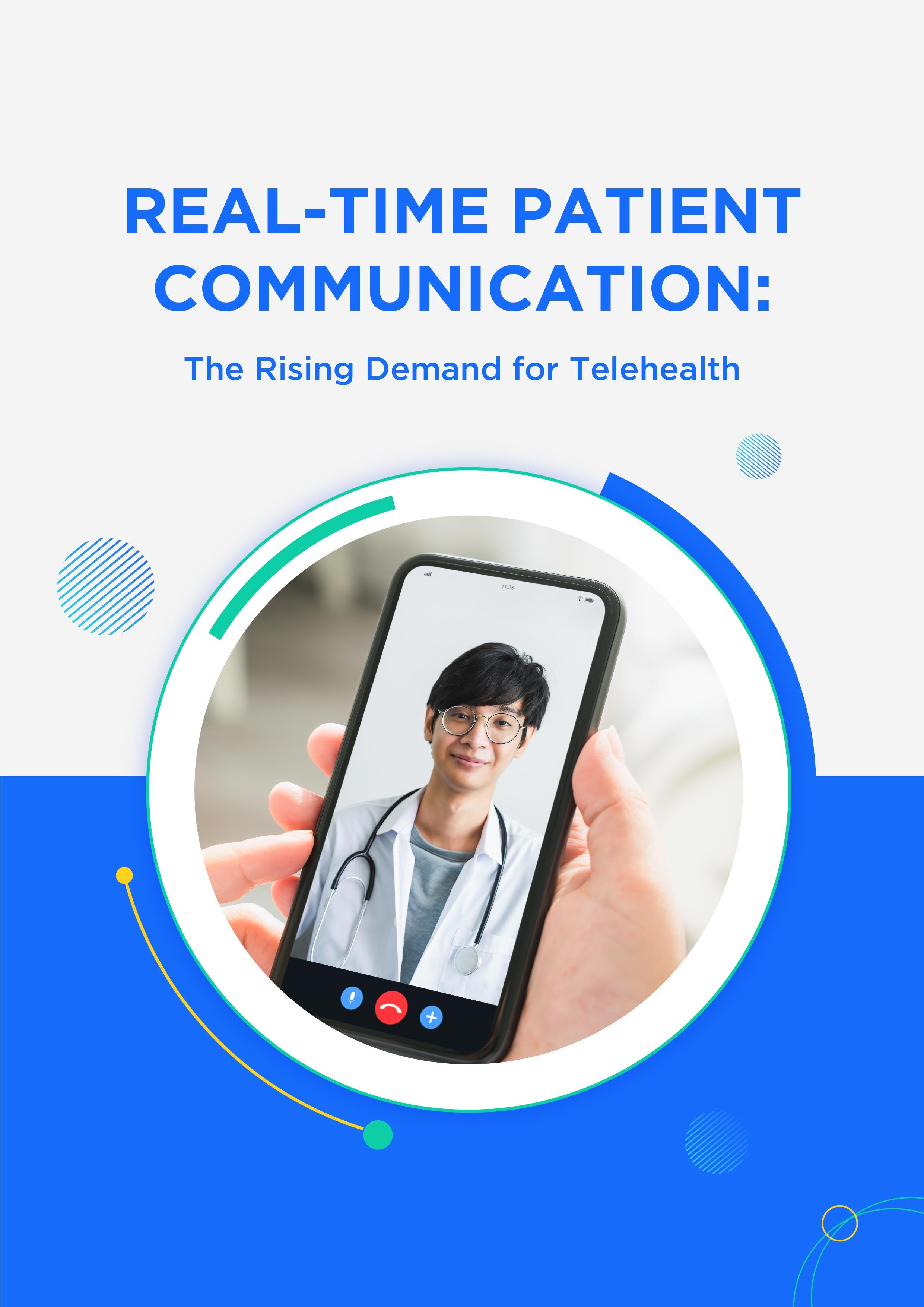HOW DIGITAL TECHNOLOGIES CAN FUNDAMENTALLY TRANSFORM PATIENT COMMUNICATION?
1.1 Get up to the speed of telehealth
Telehealth encompasses a range of communications technologies including live video, remote patient monitoring, mobile health apps, and store-and-forward platforms. According to a Sermo survey of more than 1,300 doctors, 85 % of physicians are having video or phone appointments. 59 % of consumers say they like to do virtual visits now than in the past, with regards to the recent survey by Black Book Market Research
Text patients 70 % of patients are more likely to choose doctors that send text reminders about follow-up care, as per the Accenture 2019 Digital Health Consumer Survey. Many providers use reminder apps to text patients about upcoming appointments and share relevant, personalized content and even initiate two-way conversations using secure communication tools.





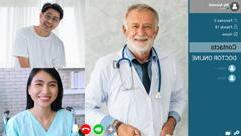
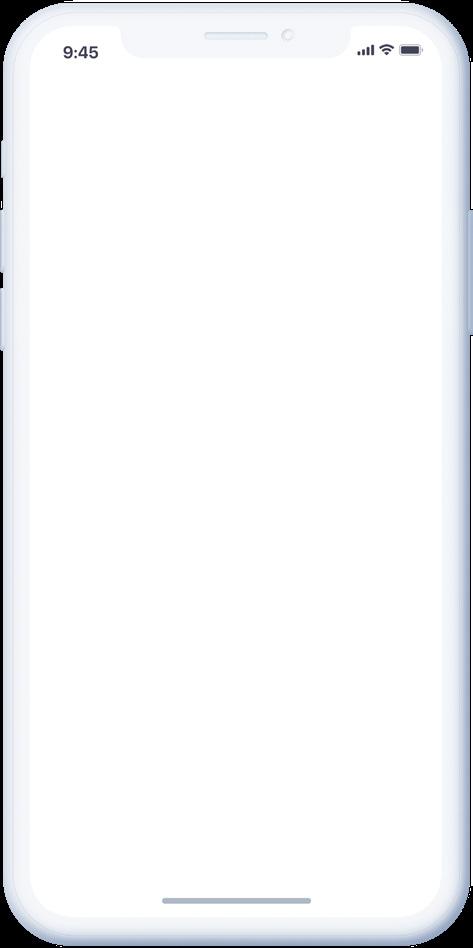







1.2 Enhance patient education using telehealth solutions
With a remote health solution, clinicians can follow up with patients at their own houses. Physicians can use the same virtual communication solutions to provide ongoing disease management education and support for chronically ill patients. For instance, a telemedicine platform could send a monthly text message to all heart disease patients with links to helpful articles or videos, and then connect diabetic patients to nutritionists via video calls.
01
just now Hello, please use our online app to book an appointment as per your day and time. just now Ok. Thank you so much. just now Hello, you can book appointment and can choose time from working hours. 20 mins ago At what time should visit ? 20 mins ago Hello Sir, as my wife is not well we want to meet you. Dr. Peter sparks About: Cardiologist Dr. Peter sparks Doctor Grade 10 yrs M.D. A+ A Passionate Coder, Loves to Swim and Dance. An Enthusiastic Designer. Loves reading Books. 01
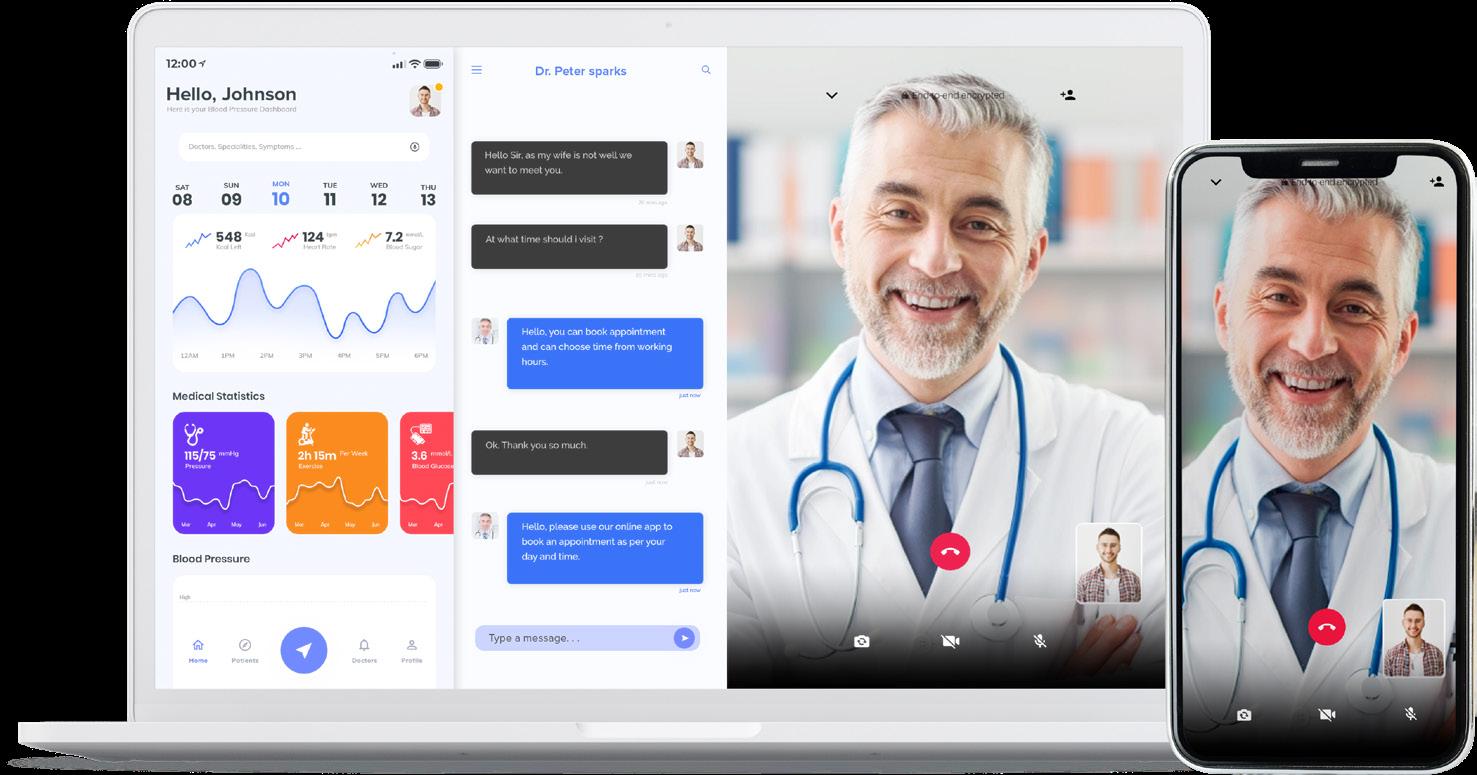
1.3 Launch a remote patient monitoring program
With remote patient monitoring, doctors and patient communication can be easily supervised. Physicians can monitor their patients regularly and spot troubling health patterns before they become major problems. Patients also get the peace of mind of knowing someone is caring about them. According to Spyglass Consulting, 88 % of healthcare providers are implementing or investigating remote patient monitoring.
Does online communications work best with doctors? 54% of patients are very happy with their providers seeking advice from online communities by making use of chat, voice and video calls to better treat their conditions, according to a recent survey. 90% of respondents from the age of 18 to 24 years said they would trust medical information shared by others on their social media networks. In fact, only 7 % of healthcare and pharmaceutical companies said they had gone digital, compared to 15 % of companies in other industries.
02
02
DEVELOPMENT OF THE TECHNOLOGY-
REAL TIME COMMUNICATION
Over the past decade, the explosion of real-time communication in the healthcare community has motivated patients to discover opportunities to use these modes of communication to interact with their health care providers. Technology-enabled care (TEC) is the collective term for telehealth, tele medicine, telecare, digital health, mHealth and eHealth services. TEC involves the intersection of healthcare, digital media and mobile telecommunications. It is perceived as an integral part of the solution to many challenges faced in the health, social care and wellness sectors, to enable more effective integration of care.
2.1 How TEC helps to tackle increasing demands in healthcare?
TEC can provide cost-effective real-time communication solutions at a time when the demands continue to increase on health and social care services. The challenge for the impending sustainability is to find a balance between: increasing complexity and costs of delivering care to an aging, comorbid population constrained budgets and the rising costs of advanced medical treatments increasing patient expectations and demand for better quality, patient-centered healthcare reduced availability and increased costs of HCPs (Healthcare Common Procedure), in-patient beds and residential care places.
There is a growing body of research showing that TEC has the potential to reduce healthcare costs, increase access and improve results in particular mobile and digitally enabled technology. 2.2 The increasing prevalence of smartphones and apps The number of health apps with real-time communication solutions on the two leading platforms (iOS and Android), has more than doubled in less than 3 years to reach over 100,000. The rise is driven by the increasing ownership of growth in the improved connectivity of the healthcare sector.
03
2.2 The increasing prevalence of smartphones and apps
The number of health apps with real-time communication solutions on the two leading platforms (iOS and Android), has more than doubled in less than 3 years to reach over 100,000. The rise is driven by the increasing ownership of growth in the improved connectivity of the healthcare sector.
Out of 43,000 health apps only 23,682 had a legitimate health function, 16,275 downloads, were aimed at the consumer patients and 7,407 were aimed at HCPs, according to a report
52%
52% of health apps available on Android devices, achieved fewer than 500 downloads while five apps accounted for 15 percent of all downloads in the health category
23,682 Legitimate Health Function 16,275 Consumer Patients 7,407 HCPs
04
2.3 Other market drivers
Pharmaceutical companies are using apps with real-time communication solutions and wearable devices to collect patient data to support research and offer complete service to patients. Leading pharmaceutical companies had 63 % more unique apps in the app stores. The total number of downloads of these pharmaceutical apps increased by 197 per cent over the last few years. These real-time communication apps deliver education and training, can titrate medication and monitor compliance.
Two Use Case Examples
Case 1:
Is a patient network and real-time research platform that advances medicine
An online patient community collects data from the users and the degree to share it with its members. The reported data about the real-world nature of disease to develop more effective products, services and care. While the majority of patients choose to share their data only with others in the community, many make their information publicly available.
Case 2:
How mobile technology in Africa is helping overcome the lack of health infrastructure?
In Kenya mobile health technology has reduced government response time to malaria outbreaks from four months to three minutes. Delivering prevention and awareness information via real-time communication systems to pregnant young mothers in Mali has aided to reduce perinatal and maternal mortality by 30%.
62%
62 per cent of the population of Africa live in rural areas where access to medical facilities is extremely difficult
82%
Mobile phone penetration in Africa reached 82 percent in the last few years
05
03
TRENDS THAT ARE ACCELERATING THE NEED FOR PATIENT COMMUNICATION
The modern growth in virtualized patient engagement, such as communicating with a doctor through a real-time communication mobile app, has created exceptional access to healthcare providers and opened the locks for patients to initiate contact.
3.1 Age of Telehealth and virtual check-ins
Clinicians are outnumbered, and at the same time the aging population of Baby Boomers is soaring high, the shift to value-based care has left the clinicians with a greater burden to keep chronically ill patients out of the hospital.
According to the report of Centers for Disease Control and Prevention (CDC), 60% of adults have at least one chronic disease and 40% of them have more than one. Considering this, it is quite problematic for the healthcare providers to handle such patients.
There is also an increasing need for smart AI applications to make sure that technology does not become a burden, but a relief support to allow health professionals to do what they do best.

Today's consumers anticipate healthcare providers to expect their needs and tailor their messages accordingly, leading pa-tients to expect the same level of personalization from them.
Puneet Maheshwari Co-founder and CEO of DocASAP
06
3.2 Shortage of doctors
With the average physician seeing 20 patients a day and spending 25% of their time on paperwork, doctors are already outnumbered about 2,000 to 1.
Patient loads will continue to grow over the next decade, and by 2032, the healthcare industry will experience a shortage of up to 122,000 physicians, according to a report.
Nurses are also in short supply gradually as patient populations grow and aging nurses continue to retire. The healthcare industry will require new registered nurses each year to meet the increased demand, according to reports.
Patient communication will inevitably suffer with fewer physicians to care for patients, and fewer nurses to help them.
Therefore, unless healthcare providers have more efficient ways to connect with their ever expanding patient rosters, the demand will remain unresolved.
07
3.3 Value-based care
Healthcare systems and Medicaid programs have generated value-based care models that examine providers to verify to meet their quality standards and also help patients by reducing costs.
It will make a rapid shift from “fee for service” payment models to “fee for value” payment models.
Healthcare provider’s performance is then knotted to incentives and/or penalties. As a result, hospitals will get affected in the nascent stage while shifting to value-based care.
Hospital margins will get squeezed on every front with Value based care systems and physicians struggle to keep up with patient loads.
Hence, new patient communication channels allow health systems to scale their operations in order to serve more patients with prime facilities.

Through AI and automation, clinicans can ensure that every patient is following the right protocol at the right time. And when required, step in promptly before unforeseen problems get worse.
Rick Halton
Vice President Of Product And Marketing At Lumeon
08
INTERPERSONAL COMMUNICATION IN HEALTHCARE
As medicine becomes progressively specialized, healthcare teams become more crowded, and interpersonal collaboration in healthcare is in high-demand. The typical inpatient experience involves a cadre of health professionals working together to provide quality care and stellar patient amenities. It can be achieved through real-time communication systems with facilities such as chat, video and voice calls.
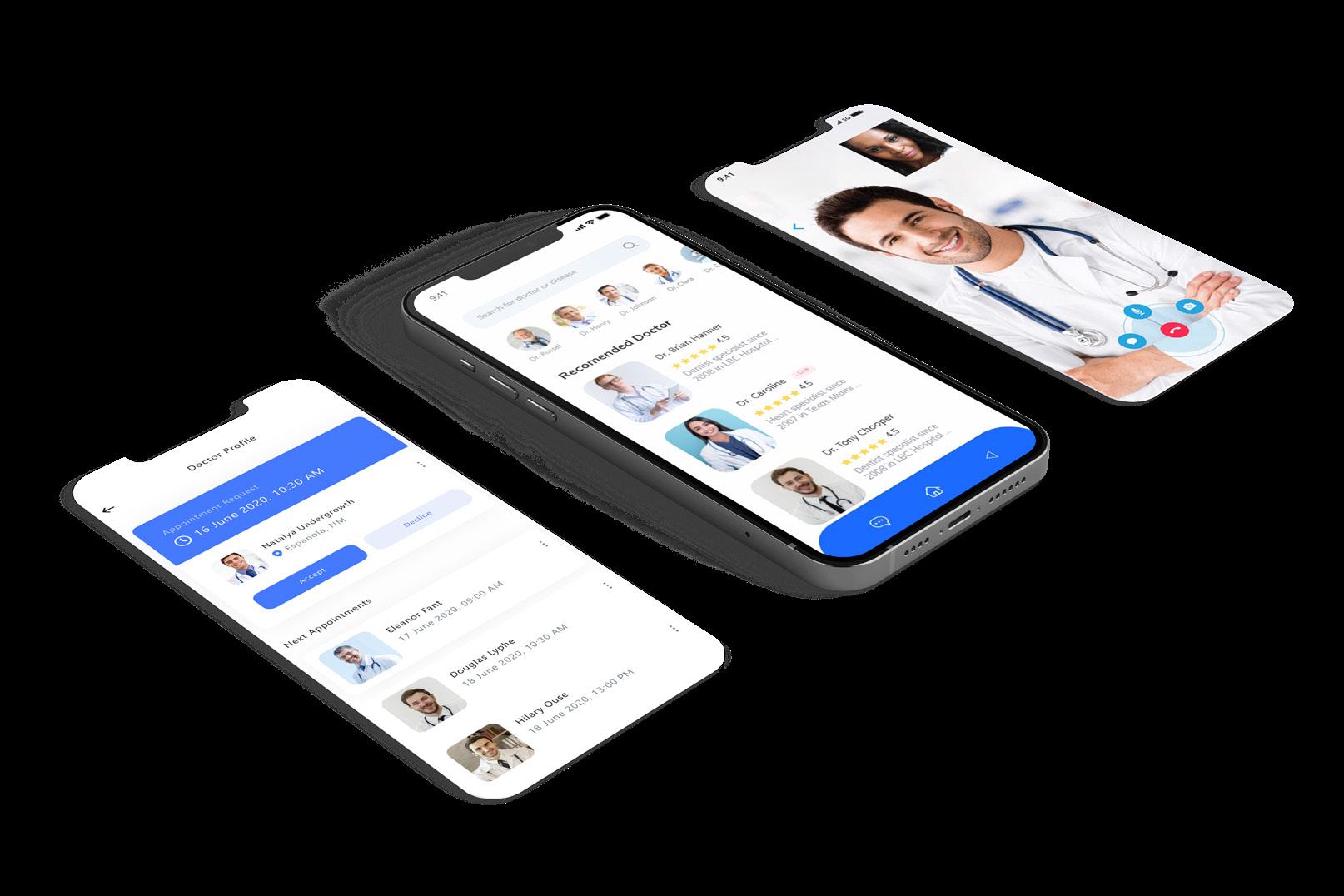
4.1 What Is Interprofessional Collaboration in Healthcare?
Multiple health workers from different professional backgrounds working together with patients, families, carers (caregivers), and communities to deliver the highest quality of care, is defined as Interpersonal Collaboration as per the World Health Organisation.
To dissect it, healthcare collaboration allows doctors to deliver patients with much improved services with their best skills on the table and partner with renowned experts in other fields as well. It is a team-based exercise that encompasses the exchange of knowledge between the healthcare workers, and has the potential to reduce medical errors during critical situations involving patient care.
04
09
One of the key benefits of telemedicine includes, the ability to refocus our work through a lens of interprofessionalism, decreasing the slack in patient healthcare and a lot more.
Heidi Sanborn Assistant professor, Arizona State University College of Nursing and Healthcare

4.2 Importance of Interprofessional Collaboration in Healthcare
As the delivery of healthcare advances to become more interconnected, coordi-nating care between physicians, nurses, and other disciplines has grown to be a necessity for every organization in the healthcare industry. Therefore, by imple-menting interprofessional collaboration, doctors can work efficiently as a team to aid progress in patient results.
4.3 Benefits of Interprofessional Collaboration in Healthcare
01 - Enhance patient care and medical results : Doctors increase the quality of patient care when they collaborate from various fields. They ensure to pick the best of the care and provide the supreme services in which they excel at. As a result, medical results also surge to be effective, mainly during critical life-ordeath cases.
02 - Reduce medical errors : Many medical errors have occurred across countries due to the lack of knowledge from the industry’s experts. They could have prevented it, if they had consulted the right doctor for the special cases.
03 - Begin faster diagnoses and treatments : Enabling interprofessional collaboration will lead to quicker treatments, as experts can diagnose problems accurately, make recommendations and aid the presiding doctor for a more holistic diagnosis for right treatment.
04 - Decreases healthcare costs : Interprofessional collaboration can reduce healthcare costs significantly by ensuring a smooth and positive patient experience and providing better medical results. 05 Increase staff relationships While decreasing the monopoly of head doctors or certain departments, hospital communication guarantees all significant players are given their fair chance to showcase their expertise and sets the patient care above all.
10
4.4 Empowering Interprofessional Collaboration with Mobile Solutions
Workers in most of the industries are connected to each other with real-time communication solutions. Whether they want to text an update to a customer or need a face-to-face conversation with a colleague via video conferencing across the country, all they need is a smartphone. Your staff will use it as infrequently as possible if hospital communications technology is hard to use, or waste valuable time trying to reach a member of the care team.

4.5 Real-time communication to boost Interprofessional Collaboration
Healthcare apps have modernized the field, and they in turn have immensely benefited from in-app chat solutions that make doctor-patient communication and doctor-to-doctor communication more effective and accessible.
This is extremely critical in time-sensitive environments such as hospitals and clinics, and thwarts patients from falling to the system with the purpose of receiving the care they deserve.
Real-time communication chat features equip interprofessional collaboration in healthcare since they bridge the gaps caused by distance and schedules.
As a result, healthcare communication can span geographies, permitting clinicians to tap their knowledge in any other country within a few clicks.
Use of a HIPAA-compliant communication platform makes sure that all the data stays private and confidential.
11
ADVANTAGES OF REAL-TIME COMMUNICATION SOLUTIONS IN HEALTHCARE
Digital health and virtual solutions are picking up speed in the post-COVID world; telemedicine in healthcare has become a critical feature to increase the quality and accuracy of patient care.
Real-time communication aids to keep all communication on one app, reducing the chances of lost or leaked data through emails or other communication methods.
It aids the patients to teleconsult with nurses and doctors on the go, and obtain information at lightning-fast speeds.
Real-time communication solutions also decrease travel time for both doctors and patients. It will thus lead the doctors with the highest levels of accuracy since they feel relaxed without traveling.
For patients, hospital trips can be kept aside only for big issues, while regular telemedicine consultations can be carried out conveniently through the confidential real-time communication systems.

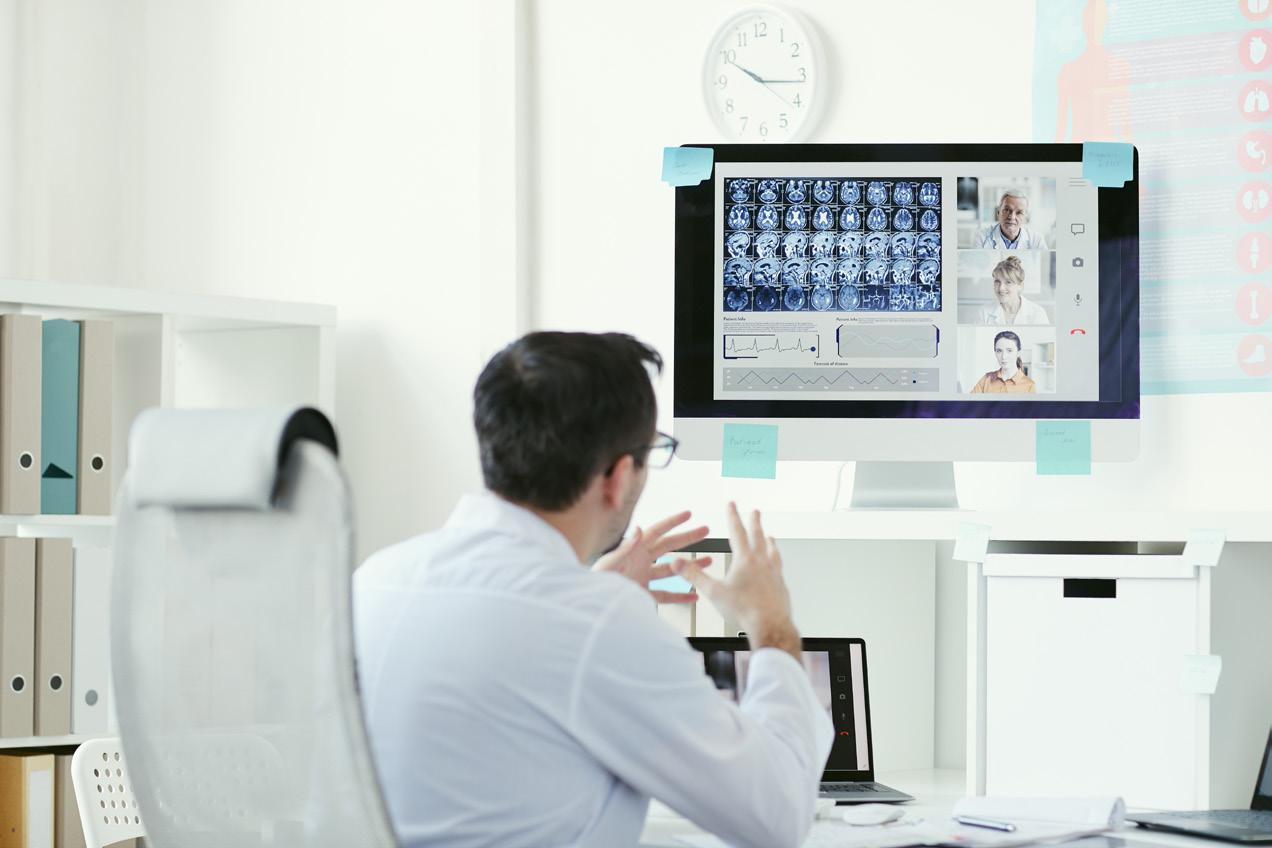
05
12
06 Conclusion
As the healthcare market continues to evolve, real-time communication technologies should ideally move further through the cycle with new inventions moving onto the cycle and the medieval failing to progress.
At the same time healthcare organizations are being suppressed under the weight of an ever-increasing volume of phone calls, voicemails, and emails, consumers gradually want digital telemedicine solutions to help them accomplish their wellness and communicate with their care providers. Telehealth and realtime communication care solutions solve both problems at once, in a highly integrated yet easy to use way.
When real-time communication is used as an extension of an existing healthcare communication platform, it doesn’t add additional apps or difficulty for doctors, and it carries the control to impact patients’ lives positively. With better patient communication you can achieve lesser readmission rates, greater HCAHPS scores, and better patient results. It will add a lot of value to the users as most people do every single day — texting, voice, and video calling on a smartphone. Now doctors can do it as well.
MirrorFly delivers highly secured and customisable healthcare real-time communication solutions that can be integrated into the existing telehealth apps. Whether the need is for a real-time communication chat API or a real-time communication SDK, their robust and scalable infrastructure can grip all communication loads, from the smallest clinic to the largest hospital network. It is an HIPAA-compliant solution that facilitates real-time communication needs; better still, if it is added as an in-app feature that condenses miles and minutes, by making it more negligible for healthcare. It’s a secure and customizable In-app Communication Solution that you can rely on to develop your own telemedicine app.
13

Next Gen Communication Solution MirrorFly Mirrorfly MirrorFly MirrorFly www.mirrorfly.com
